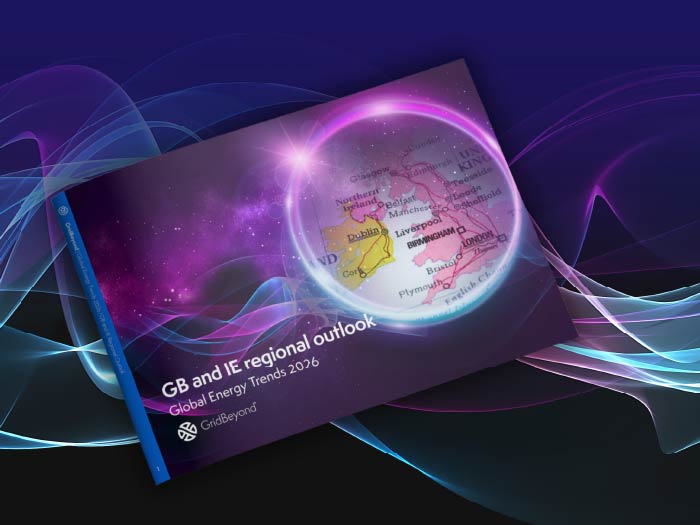News
better business decisions
Posted 7 months ago | 5 minute read

Understanding REMA: What electricity market reform means for your business
The Review of Electricity Market Arrangements (REMA) is a comprehensive initiative by the government aimed at reforming the electricity market to support the transition to a decarbonized, cost-effective and secure electricity system by 2035. For businesses operating in the UK, especially those in energy-intensive sectors, it could reshape how electricity is priced, traded, and consumed.
In this article we explore REMA and what it could mean for your business.
What is REMA?
The current electricity market was built to support a fossil-fuel-heavy system. While it has supported the UK’s initial steps toward decarbonisation, it now struggles to accommodate an energy landscape dominated by renewables like wind and solar. The key drivers for the reform are affordability, sustainability, and security, often referred to as the “energy trilemma”. REMA aims to balance all three by modernising how the market operates. While some schemes like Contracts for Difference (CfD) and the Capacity Market (CM) are expected to remain in place (albeit with refinements), nearly every other part of the market is up for debate.
REMA is a comprehensive review of the electricity market designed to align it with the nation’s net zero targets. It’s the most far-reaching reform since the early 2000s, when systems like the New Electricity Trading Arrangements (NETA) and British Electricity Trading and Transmission Arrangements (BETTA) were introduced.
REMA is not just about tweaking existing policies. It represents a fundamental shift in how the energy market functions, covering everything from wholesale electricity pricing to network balancing, ancillary services, and policy frameworks.
Launched by the government in July 2022, the first REMA consultation set out the case for change and the potential options for reforming the electricity market across various areas. The initial options ranged from evolution to revolution. Following public responses, the reform options were narrowed in the second REMA consultation published in March 2024 and further distilled in the Autumn update in December 2024, published alongside the Clean Power 2030 Action Plan (CP30 Action Plan), the government’s roadmap to achieving a clean, sustainable and resilient power system by 2030.
Changes ahead
Currently, the UK operates on a national wholesale electricity price. The rapid growth of intermittent renewables, especially offshore wind and solar, has added complexity to grid management. These resources are often located at the edges of the network, such as coastal or remote areas. Through REMA, the government is exploring a shift to a zonal pricing model, where electricity costs vary depending on location. This could reflect local supply and demand more accurately and reduce system inefficiencies.
For example, the UK spends billions annually managing network constraints (paying generators to switch off or reduce output when the grid is overloaded in certain areas). A zonal system could significantly cut these costs.
Despite the rise of renewables, gas-fired power continues to play a crucial role, especially when demand spikes or the wind doesn’t blow. However, gas remains expensive and carbon-intensive.
Gas often acts as the marginal generator, setting the market price for all electricity. This has led to sharp increases in electricity costs, particularly after the Russia-Ukraine conflict, which caused global gas prices to soar. REMA looks to reduce this dependency, but doing so requires systemic change.
What does this mean for businesses?
For businesses, especially those in energy-intensive industries, REMA could bring both challenges and opportunities:
- energy pricing: a move to zonal pricing may mean your energy costs could rise or fall depending on your location.
- investment planning: companies with on-site generation or long-term energy contracts need clarity to plan ahead.
- fixed-term contracts: energy suppliers require pricing certainty to offer long-term deals—something currently in limbo due to policy uncertainty.
- Power Purchase Agreements (PPAs): Long-term energy buying strategies, especially through corporate PPAs, could be affected by market redesigns.
What’s next?
The government is expected to release a high-level roadmap of REMA decisions in summer 2025. This will provide much-needed clarity to the industry, investors, and businesses alike.
In an Open Letter, Ofgem said that it would share its thoughts on the general direction of travel with regards to network charging shortly after the REMA decision. Changes to the Distribution Use of Systems (DUoS) charging regime should follow, dictated by the approach taken on Transmission Network Use of Systems (TNUoS) charges through REMA.
The government is also focused on delivering the Contract for Difference (CfD) reforms necessary to achieve its CP2030 Action Plan, although any significant changes to the CfD which may be introduced as part of REMA are not expected to be implemented until 2027 at the earliest.
To ensure security of supply, a Low Carbon Flexibility Roadmap that aims to promote the development of low-carbon flexible technologies through market reforms, providing batteries and consumer-led flexibility with fair market access and better market utilisation will be published later in 2025.
In parallel with REMA, the government is evaluating the need for government intervention in corporate PPAs and undertaking a broad review of the Renewable Energy Guarantees of Origin (REGO) scheme with the view to further driving system decarbonisation.
REMA is a once-in-a-generation opportunity to future-proof the UK’s electricity market. For businesses, understanding these reforms is essential. Whether you’re managing energy procurement, making infrastructure investments, or simply trying to control costs, REMA will shape your strategy.





